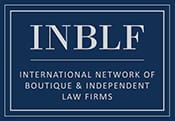They’re Trying to Make Stewardship More Efficient
Eric F. Greenberg Attorney-at-Law
April, 2018
It’s a fixture in most corners of the food contact world: The giving and receiving of guarantees.
The guarantees address the materials’ compliance with Food and Drug Administration food contact materials requirements and many other legal or regulatory structures, or make representations about product characteristics. Called by various names such as ‘product stewardship’ or ‘quality’ information, suppliers often have to provide these guarantees before converters will use their materials or end users will accept the products.
Though it’s a very common practice to ask for and pass along these guarantees, for many companies, it’s not always easy to know what topics to ask about, or even to know how to interpret the answers they get. The range of subjects covered can be dizzying, all the more so because it evolves over time, as laws or regulations change or as a new chemical captures public interest (often unrelated to safety considerations.)
As a result, the guarantees and representations might address FDA food contact compliance, California Proposition 65, CONEG’s Model Toxics law about heavy metals in packaging, environmental considerations, phthalates, BPA, latex, dioxins, and many other individual chemicals or classes of chemicals. Sometimes, companies add topics to their lists of subjects they ask suppliers about only because a customer asked them about it, without fully understanding why.
And almost always, packaging makers and users have a measure of insecurity about whether they are asking the right questions about the right topics. In our office, we have helped steer many such a company through the process of developing or polishing their stewardship programs. It’s much more complex and variable than you might expect.
Companies put a lot of effort into crafting their lineup of topics to ask about, and how they ask. For a long time, it’s been recognized that if that batch of information could somehow be standardized, or even partially made common, efficiencies could be added to the process.
Now, one packaging industry group has offered some suggestions—in the form of a list of considerations—on how to approach this issue. That group is an Institute of Packaging Professionals (IoPP) technical committee called the Food Safety Alliance for Packaging. It is best known for developing and publishing model plans several years ago to help packaging makers implement voluntary Hazard Analysis and Critical Control Points programs. In March, it published its “Food Packaging Product Stewardship Considerations” (FSAP), which aims to raise food safety awareness in the food packaging industry.
A working group of the committee developed these considerations as suggestions for best practices. The FSAP working group says, “Food companies and members of the packaging supply chain are welcome to use all or parts of this non-binding document as a roadmap for product stewardship considerations.” As it developed the list, “input was given by brand owners including Nestlé and Mars Wrigley Confectionery and packaging supply chain members including Decernis, Siegwerk, American Packaging Corp and Henkel.” In addition to briefing the FDA about the list, FSAP gave several industry players a chance to look it over before publication and incorporated some of their suggested changes.
The list, available at www.iopp.org/fsap, describes itself as “non-binding.” It is organized in terms of considerations of substances that should not be used intentionally when “suitable alternatives” exist, and substances whose use should be minimized. The list defines minimization similarly to FDA Good Manufacturing Practices, that is, that you should use only as much as necessary to achieve a technical effect. The FSAP working group is careful to point out that “Inclusion of an item on the list does not indicate that the members of the working group consider said item to pose a risk to food safety or public health.” This reflects the fact that listings were inspired by several different sources of motivation, including local, state, federal, regional, or international regulatory requirements; food and consumer safety considerations; environmental protection; negative impact on product quality; or consumer and retailer interest. The list also warns readers at its top that “Legal requirements must first be followed for food contact materials, then the below best practices can be considered.”
One of the key drivers behind the effort to create the list and a member of the working group is Stephen Klump of Nestlé, whose company has for some years been among the most active and influential in the realm of food packaging product stewardship.
The group decided to make a list that was intended more as what he calls “watch-outs” for consideration by the packaging supply chain and not anyone’s idea of a mandatory program. Klump emphasizes, “Individual food companies and members of the packaging supply chain are welcome to use this non-binding document, in whole or in part, as a roadmap for product stewardship considerations.”
Will this list be truly helpful or will it be controversial? After all, it refers to itself as “best practices,” but is designed only to be a set of considerations. Though there were outside reviews and some input before publication, the list is not a consensus document in that sense. The FSAP working group wants to make clear that the list is intended merely as a helpful roadmap for individual companies to develop their own unique programs, rather than anyone’s idea of a gold standard or a mandatory minimum. If it ends up being viewed and used in its intended spirit, it should serve its creators’ purpose. PW
Eric Greenberg can be reached at [email protected], or visit his firm’s Web site at www.ericfgreenbergpc.com.
This article is informational only and is not intended as, and should not be considered to be, legal advice.
Be sure to check for any updated information about the topics discussed in this article.


